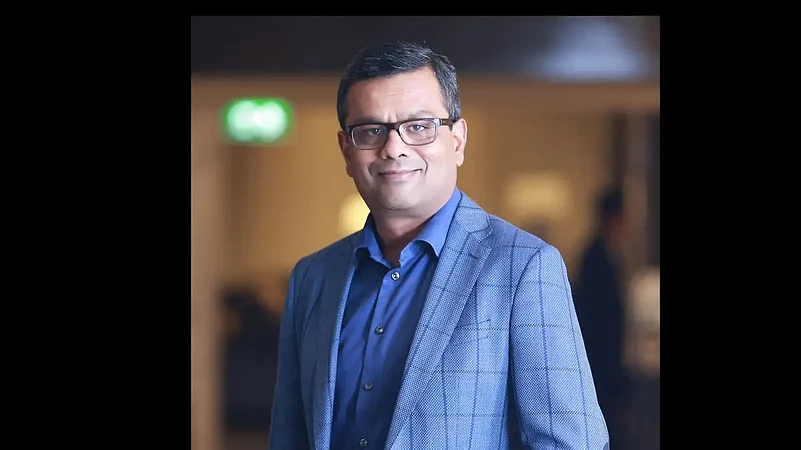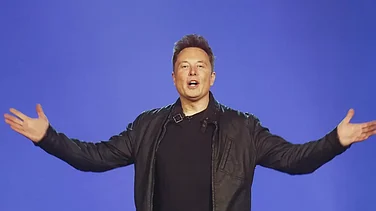The 5G spectrum allocation is likely to kickstart next month and as per reports, the telcos may roll out the fifth generation technology in mobile broadband networks in August or September this year.
Major telecom players such as Airtel, Vodafone, and Reliance Jio have also conducted 5G trials in India. On the other hand, several smartphone players have been selling 5G supported smartphones for over a year now.
Swedish telecom equipment vendor Ericsson has collaborated with leading telcos in the country for 5G trials and has also invested under the production-linked incentive (PLI) scheme for telecom to enhance production for telecom gears.
Advertisement
In an email interview with Outlook Business, Nitin Bansal, Ericsson India's MD and Head of Networks for Southeast Asia, Oceania and India spoke about 5G rollout, PLI scheme, 5G trials in India, and how many users are willing to pay for 5G services. Here are the edited excerpts:
1. How are businesses likely to gain from 5G?
Investment in 5G is critical to unlock the next level of growth for Indian enterprises. We also expect new use cases to emerge across industries over time, creating more value and ROI for telecom operators.
5G networks will be critical for the Indian enterprises in their pursuit of Industry 4.0 as it offers a high-performance communications foundation that is reliable and secure. Private networks will support a diverse set of Industry 4.0 use cases, such as CBM, RealTime Location System (RTLS)/asset tracking, inventory management, building automation, and robotics.
Advertisement
In fact, frontrunner service providers around the world are increasing flexibility and enabling smart manufacturing by introducing private networks to the industrial sector. As per Ericsson’s study, by 2030 up to $700 billion of 5G-enabled, the business-to-business value could be addressed by service providers, with the projected value of the 5G-enabled digitalization revenues for CSPs in India being approximately $17 billion.
2. How was the response of 5G trials in the country
Ericsson is the first to demonstrate 5G capabilities in India and the various 5G field trials conducted successfully have set the stage for rollout of 5G services in the country.
We collaborated with Bharti Airtel to demonstrate India’s first 5G live network in Hyderabad along with trials in Gurugram and Manesar. This was followed by demonstration of India’s first 5G rural trial in Bhaipur Bramanan village on the outskirts of Delhi/NCR.
We have also partnered with Vodafone Idea Ltd. (VIL) to showcase the power of 5G to revolutionize the healthcare sector in India. The use-case demonstrated how 5G connectivity can enable access to healthcare in remote parts of the country by enabling remote diagnostics.
Prior to this, Ericsson and Qualcomm successfully collaborated at the India Mobile Congress (IMC) 2019 to showcase India’s first-ever live 5G video call using a 28 GHz spectrum. We also took the lead at the India Mobile Congress 2019 to demonstrate the reliability, speed, and low latency of 5G through the Connected Music use case during the inauguration of the event. We also demonstrated operations of driverless car at IMC 2018 with Reliance Jio.
Advertisement
3. Will 5G enable Telcos to see better average revenue per user (ARPU) for telecom companies?
5G is already enabling communications service providers (CSPs) transform the digital experience of their customers. According to the 5G Pacesetters report - service providers that are currently driving the global demand for consumer 5G are three times more likely to retain customers, almost twice as likely to grow average revenue per user (ARPU) and mobile services revenues compared to other CSPs. The report also stated that 50 per cent of 5G pacesetter category CSPs out of the 73 CSPs participated in the study, increased ARPU by one percent or more year-on-year compared to a quarter of all other CSPs.
Advertisement
4. How are users likely to gain from 5G service?
With capabilities such as ultra-low latency and ultra-high reliability, 5G will enable consumers to enjoy enhanced 4K video, cloud gaming, XR applications and live sports.
5. Is the 5G rollout likely this year after the spectrum sale?
With the market witnessing strong mobile broadband penetration, India is ready for 5G and can roll it out as soon as affordable spectrum is made available to the CSPs. We work closely with all Indian operators and continue to engage with them on their network evolution plans.
6. 5G services are likely to be costlier initially, will there be many takers in India?
Advertisement
According to our study, consumers in India are willing to pay a premium for new 5G capabilities; at least 40 million smartphone users in India could take up 5G in the first year of 5G being made available. In fact, Indian users showed the most significant rise in their intention to upgrade globally, with 67% wanting to take up 5G once it is available, an increase of 14% points over 2019. 5G will represent around 39% of mobile subscriptions in India at the end of 2027, estimated at 500 million subscriptions.
7. What are the challenges to set-up 5G infra in the country?
Advertisement
The most important aspect for the 5G rollout in the country is spectrum availability. A smooth 5G deployment in India will require the availability of an adequate spectrum across all bands at reasonable prices.
8. Tell us about the PLI scheme investment, will the production help in the 5G deployment.
We have participated in the government’s PLI scheme for the telecom sector and the additional investments that we are making under this scheme will help us scale our Pune facility. Ericsson has been in India since 1903 supporting all mobile generations from 2G, 3G, 4G, and now 5G. In fact, Ericsson was the first telecom equipment company to start manufacturing in India in 1994. Around 95% of the products supplied to our customers in India are manufactured at our Pune facility.
We stay committed to India and look forward to the opportunity of helping Indian service providers seamlessly evolve their networks from 4G to 5G.
9. How has the response been from markets other than India where 5G has been deployed?
We are seeing a rapid adoption of 5G in markets where it has been introduced. In 2019 we partnered with SK Telecom, the largest mobile operator in South Korea with nearly 50 percent of the market share, to switch on its commercial 5G network in the world’s fastest growing 5G market. South Korea has been able to add 10 million+ 5G subscribers of the 70 million users in total.
We also partnered with Telstra in the same year, Australia’s largest mobile network provider, to roll-out and activate 5G in 10 cities. Early users were able to experience better network coverage even in underground and overpopulated areas while advanced technologies such as AR and VR are being utilized for diverse use cases powered by the speed and low latency of 5G.
Some of the global use cases that we are deploying across other markets can be adapted and introduced in India apart from the India specific use cases that we are working on with Indian operators.















 Just one email a week
Just one email a week